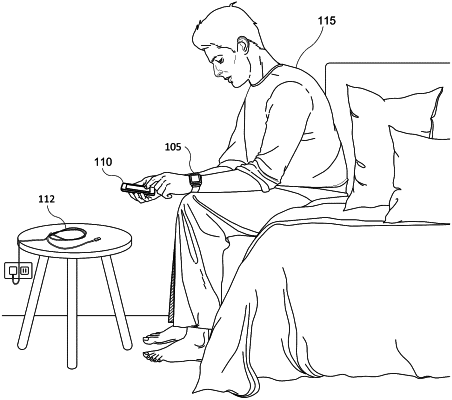| CPC G08B 25/008 (2013.01) [G04G 13/021 (2013.01); G04G 21/025 (2013.01); G08B 21/182 (2013.01)] | 20 Claims |

|
1. An electronic device comprising:
one or more data processors; and
a non-transitory computer readable storage medium containing instructions which, when executed on the one or more data processors, cause the one or more data processors to perform actions including:
accessing alarm data that indicates that an alarm is enabled to present an alarm stimulus at a preset alarm time; and
prior to the preset alarm time:
collecting activity-indicative data that includes:
one or more measurements collected by a sensor of the electronic device; or
one or more inputs received at an interface of the electronic device;
accessing a set of wakefulness conditions, wherein each wakefulness condition of the set of wakefulness conditions: (i) is configured to be satisfied when the activity-indicative data has one or more characteristics that are specified in the wakefulness condition; and (ii) is associated with a confidence value that corresponds to a predicted likelihood of whether a user associated with the electronic device is awake;
determining, based on the activity-indicative data, that a first wakefulness condition of the set of wakefulness conditions is satisfied, wherein the determination that the first wakefulness condition is satisfied is performed at the electronic device;
in response to the determination that the first wakefulness condition is satisfied, accessing a first confidence value associated with the first wakefulness condition;
determining that the first confidence value indicates an increased likelihood that the user is awake; and
disabling, based at least in part on the first confidence value indicating the increased likelihood of the user being awake, the alarm such that the alarm stimulus is not to be presented at the preset alarm time.
|